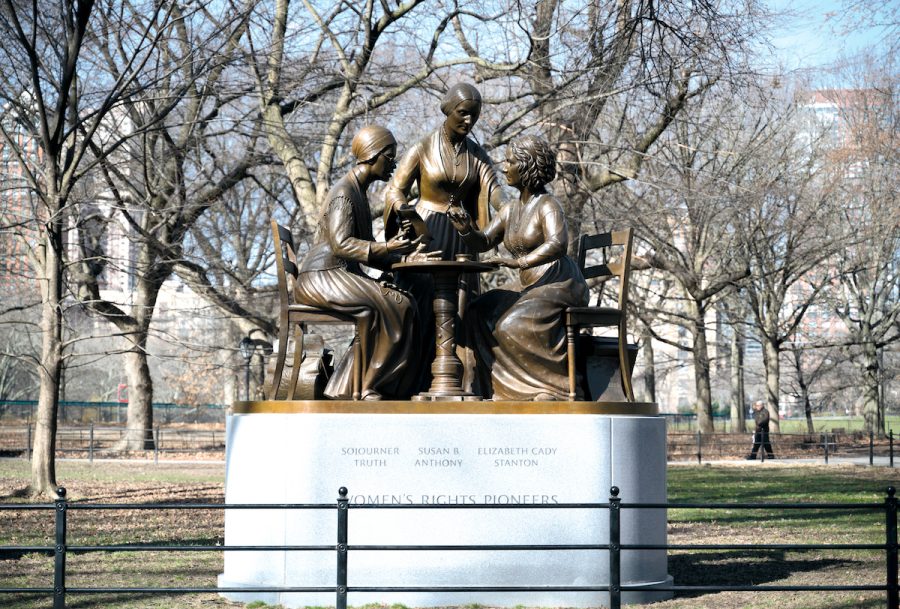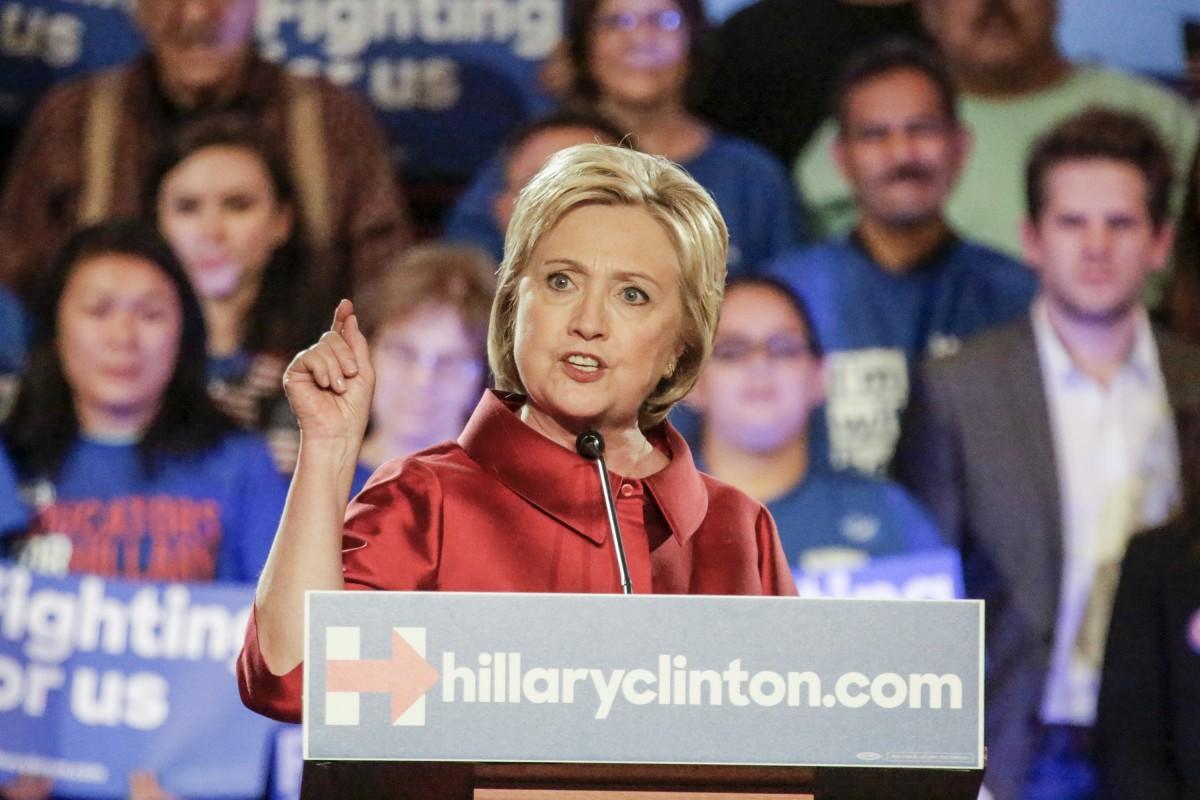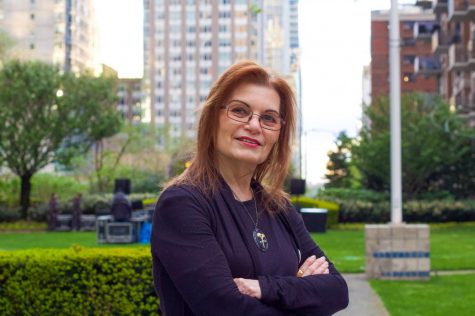Celebrating Women’s Suffrage in Central Park
Central Park, Seneca Falls, and the women who inspired a movement
The Women’s Rights Pioneers statue is the first in Central Park to depict real-life women.
March 1, 2023
Central Park was approved in 1853 and opened in 1876, bringing 840 square acres of vegetation and rich green foliage to New York City. Despite this quick construction, it took over 164 years to bring the first-ever statue of historical women to the park, honoring those who stood for women’s rights and suffrage.
The statue, which was installed in the Literary Walk in August of 2020, brings to light the history of women’s suffrage. The bronze monolith created by Meredith Bergmann stands tall at nine feet, featuring some of the foremothers of women’s rights: Elizabeth Cady Stanton, Susan B. Anthony and Sojourner Truth.
Born in New York in 1815, Stanton became a pioneer for women’s rights and was also involved in the anti-slavery movement at the time. She first met Anthony in 1851 at an anti-slavery convention, and the two worked together to protest for women’s rights going forward. The oldest of the three women, Truth was a Black woman who was born into slavery and gained her freedom in 1828. In 1851, the same year that Stanton and Anthony met, Truth began a lecture tour, in which she became known for believing that suffrage for formerly enslaved men should come at the same time as that for women.
Why did it take so long for New York City to finally put a historic statue of women among its other 22 historic statues of men? Statues depicting Alice in Wonderland, installed in 1959, and Juliet from “Romeo and Juliet,” installed in 1977, have lived in the park for decades. If fictional women can be memorialized, why not the real deal?
The reason is that this country was built on misogynistic reasoning by sexist leaders. Men, specifically Thomas Jefferson, wrote in the Constitution of the United States of America that “We hold these truths to be self-evident, that all men are created equal.” This did not include women, nor people of color.
Many of the 22 men with statues in Central Park are known for their racist histories. One of the most prevalent examples is that of Christopher Columbus. Columbus, who is often celebrated for discovering the New World, led the devastation of the Indigenous people who already lived there, enslaving them and bringing diseases that wiped out entire populations. Men like Columbus certainly do not deserve to have statues built in their honor before women who helped bring suffrage to those in New York and the rest of the United States.
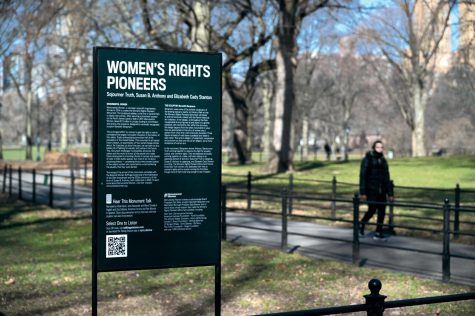
The women’s suffrage movement was growing here in New York years before Central Park was founded. In 1848, Stanton met with over 300 women and men in Seneca Falls to form the first-ever women’s rights convention. The convention opened with words from Stanton: “We are assembled to protest against the form of government, existing without the consent of the governed — to declare our right to be free as man is free, to be represented in the government which we are taxed to support, to have such disgraced laws as give man the power to chastise and imprison his wife, to take wages which she earns, the property which she inherits, and, in the case of separation, the children of her love.”
People in New York City also held two women’s suffrage parades on May 4 and 5 of 1912 on Fifth Avenue, marching from Washington Square to Carnegie Hall. Over 15,000 people from all over New York and other states came to support the cause. Mothers showed up with baby carriages, with children and dogs marching along beside them.
These marches were not exclusive to New York. One year later, the labor lawyer Inez Milholland rode on horseback to lead a women’s suffrage march on in Washington, D.C. This demonstration was the first organized march in Washington, and Milholland eventually became the inspiration for the iconic comic book character Wonder Woman. The demonstration was organized by Alice Paul and Lucy Burns, who were leaders in the National American Woman Suffrage Association (NAWSA) and who were galvanized by the failure of a constitutional amendment which would have outlawed the denial of suffrage based on sex. These are just some of the often-overlooked heroes of the struggle for women’s rights.
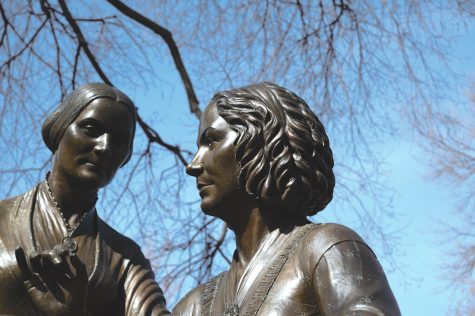
At the time of these suffrage marches, the streets of New York were lined with magnificent trees, gardens in front of stores, brownstones, and small parks to just sit and take respite. Women took advantage of these parks, as it was there that they were able to share tales of their lives as mothers, wives and college students. They would communicate through secret suffrage meetings or clubs away from home or off campus, and many expressed their desire for a ratification of the right to vote, alongside the other protections men had. They wanted to have jobs, and their own bank accounts as well as to be able to keep their children if they were to divorce their husbands.
Race was another major factor in the fight for women’s suffrage. A young 16-year-old Chinese-American woman named Dr. Mable Ping-Hua Lee was instrumental in helping to organize the demonstrations in New York City and marched down the streets, but this sort of inclusion was not always the case. For example, women of color were not invited to the 1848 women’s rights convention in Seneca Falls, which is largely considered the birth of women’s suffrage.
Sojourner Truth, who is one of the three women immortalized in the Central Park statue, was one of many Black women not present at the Seneca Falls convention. She is now best known for her speech “Ain’t I a Woman,” which was heard in Akron, Ohio, at the 1851 National Women’s Rights Convention. However, white attendees attempted to boo her off the stage before she could speak, and different papers at the time reported her speech differently, some giving her a racialized dialect that she most likely did not have.

Furthermore, when looking at this statue, it is important to note Stanton and Anthony’s complex history with the abolition movement as white women. Although they were both part of the anti-slavery movement prior to the Civil War, following the introduction of the 15th amendment — which made it so that Black men could vote — they withdrew their support due to the amendment not including women. Stanton and Anthony believed that no one should receive suffrage if it did not include women as well.
In 1920, the passage of the 19th Amendment finally gave women the right to vote. However, Black women, and many women of color, were still ostracized at the polls for their race, in the form of literacy tests, poll taxes and violent intimidation. It was not until the Voting Rights Act was passed in 1965 that the right of Black women to vote became protected, and the suppression of Black voters remains an issue today. When we celebrate the anniversary of women’s suffrage, the rage of oppressed women’s voices still rings on.
With even just a quick glance through the history of women’s suffrage, it’s clear that there are many influential women who deserve to be commemorated through statues in Central Park alongside Elizabeth Cady Stanton, Susan B. Anthony and Sojourner Truth. These trailblazers raged for the rights of women, and women like them should have their stories told throughout Central Park just as the stories of prominent male figures are — because the only thing more powerful than rage is a voice.

